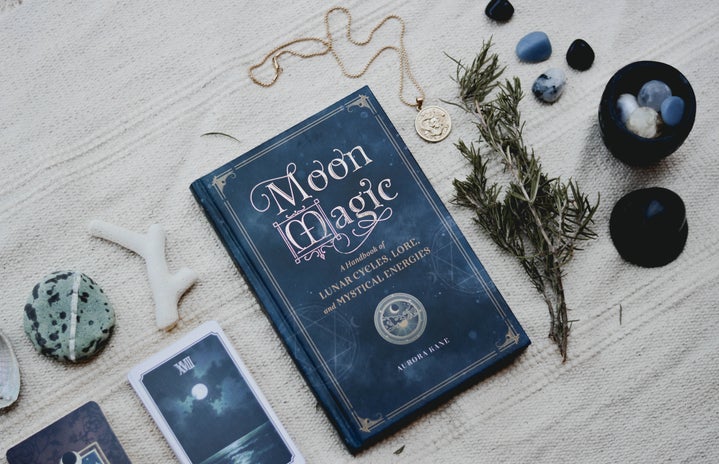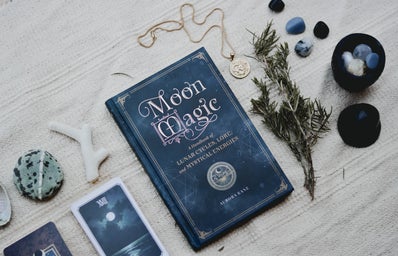With reboots, revivals, and remakes being announced every other day, one does wonder how Hollywood’s new currency of intertextuality could ever bring something new to the table. Netflix’s original series The Chilling Adventures of Sabrina brings the 1990s tv sitcom Sabrina the Teenage Witch to modern audiences. With movements like the Women’s March, Time’s Up, and #MeToo when so many women seem to feel powerless even when speaking out and standing up, and the only option they have for seeking justice often appears to be useless-–the fantasy of witchcraft is extra alluring.
The Chilling Adventures of Sabrina, originally based on the Archie Comics, is, in that sense, right on cue. The story stars Kiernan Shipka (Mad Men) as Sabrina Spellman who, on her 16th birthday must choose between the witch world of her family and the human world of her mortal friends. Sabrina’s deceased father was a revered powerful Satanic priest who broke Satanic law and married a mortal. Sabrina is expected to pledge allegiance to the Dark Lord, the devil himself, and renounce her human ties. In return, she gets unfathomable power but only in exchange for total fealty.
Watching any of the trailers, one can glean that Netflix’s Sabrina is substantially darker than the 1990s ABC series Sabrina the Teenage Witch, then played by Melissa Joan Hart. However, even watching twenty minutes of the new series audiences and critics such as The Atlantic, Vox, and Diabolique alike know The Chilling Adventures of Sabrina offers not only a thrilling enjoyable show but a critique of female power. The new Sabrina is still recognizable in her fluffy sweater and headbands and eager approach to using witchcraft to hex the school principal and to stand up to bullies. Despite the difference, Shipka’s Sabrina is a character deeply reminiscent of her movement: a teenage witch for the March For Our Lives generation. A generation that is more politically active, globally and social justice minded than ever before.
The new Sabrina is savvy enough to sense entrenched injustice in both the witch and the human world. She is confident and brave enough to challenge the norm. In other words, Sabrina wants to change both of her worlds for the better but is susceptible to the darker allure of having control over others considering the goal of making the world a better place could be more easily reached by turning to darker witchcraft. Sabrina’s struggle rings true today where horrific injustices still happen despite the peaceful diplomatic efforts to stop them.
The Chilling Adventures of Sabrina ends up being a surprisingly complex interrogation and commentary about women in power—supernatural or not. The show is aware of both the necessity of women claiming power and of the consequences that often follow when power is used for revenge. The Netflix series uses witchcraft to explore the dynamics of unconstrained authority. At Sabrina’s human high school Baxter High School, Sabrina stands up to bullies and founds a women’s intersectional cultural and creative association, or WICCA for short. WICCA’s mission is to provide vulnerable students with support. Struggling to accept the idea of relinquishing her freedom when she turns sixteen, Sabrina dramatically and publicly denounces the controlling behavior of Satan. By critiquing both the mortal and witch world, Sabrina is a threat to both of the worlds she belongs to. She has power over mortals due to her half witch identity and has power over other witches by refusing to adhere to the patriarchal structure of the witch world.
Witches in popular culture have long been an archetype used to showcase the perversion and danger of women who sought power of their own, wanted solitude or simply did not conform to society’s idea of the perfect woman. In fairy tales, witches lurk at the edge of the woods, worming their way into the affections of gullible children and wealthy kings. However, Sabrina (along with other 1990s magical female humans such as Buffy from Buffy the Vampire Slayer, The Hartwell Sisters from Charmed, and Sarah Bailey from The Craft) gave birth to a new wave of good witches in popular culture. Each story explores the idea of intending to use their power for good.
In many ways, The Chilling Adventures of Sabrina reflects the ‘90s witches. The 2018 Sabrina is intelligent, tough, strong-willed, sweet and kind for a family devoted to Satan. Despite the similarities, the modern Sabrina breathes new life into the century’s old folklore of witches. Shipka’s Sabrina has a vocabulary and comprehension of sexual politics that root her firmly in the 21st century and reflects the young adults and teenagers today. “This is totally the Sabrina for 2018, in so many ways. She’s a woke witch,” Shipka told Variety. “Her entire grappling with signing her name away in the Book of the Beast and questioning a lot of the more patriarchal elements of what she was raised to believe and to go into. I think that in and of itself is very feminist and she’s a strong independent woman, and she stands up for herself, and she does what she thinks is right.” The reflection of the times is not only reflected in Sabrina herself but the townsfolk, too. Although Greendale, the fictional town where Sabrina lives, seems to exist in a strange time warp where people talk on rotary phones and drive 1950s cars, Sabrina and her friends speak effortlessly about intersectionality, equality, and the patriarchy. Her two best friends are Susie, played by a nonbinary actor, and a black pansexual British warlock.
The fundamental character arch for Sabrina is her struggle to find her own identity when she lives in two different worlds. She has one identity at school and one at home. Although Sabrina is a witch, she is also a teenager. This struggle of identity rings true for the show’s primary audience Gen Z whose demographics are majority mixed race or come from immigrant families. Throughout the show, many adults try to convince Sabrina that when she pledges herself to Satan, she won’t be giving up freedom in exchange for power because power is a new kind of freedom. As her 16th birthday approaches Sabrina is hesitant to give up the best of both worlds and chose only one.
One witch assures Sabrina that if she wants to leave her life as a witch behind and rejoin the mortal world she’ll be free to leave. Even after Sabrina signs over her soul and body to Satan. Another witch attempts to relate to Sabrina’s fear, saying, “I know you’re scared, Sabrina because all women are taught to fear power. Own your power. Don’t accept it from the Dark Lord. Take it. Wield it.” However, every single one of the adults are liars. In reality, Sabrina’s coven and Satan himself aren’t going to let Sabrina do whatever she wants with the power Satan gives her, no questions asked, nor will they let her leave after pledging loyalty to Satan.
The only person who tells Sabrina the blunt truth is Prudence, a fellow teenage witch. When Sabrina tells Prudence that she wants both freedom and power, Prudence scoffs at her saying, “He’ll never give you that, the Dark Lord. The thought of you, of any of us, having both terrifies him.” When Sabrina demands to know why Prudence simply replies, “He’s a man, isn’t he?”
The situation the series sets up is that Sabrina, due to her special identity of being half-witch and half-mortal, might be the one girl with the power to change the world. She could be able to take on the patriarchal and repressive practices of Satan and challenge the culture of toxic masculinity that allows football players at her high school to get away with assault and abuse. The Chilling Adventures of Sabrina suggests both missions are equally important, but both potential revolutions could go very wrong in the absence of balance. For example, in an attempt to protect her friend from getting bullied about her sexuality and gender identity, Sabrina becomes a bully herself. At the same time, when Sabrina embraces her full power as a witch, she indulges in arrogance and ambitiousness that puts the people she loves in danger.
The show suggests that, whether witch or mortal, balance is the key to obtaining both freedom and power. In fact, the entire series itself proves that balance is key in a nostalgia-drenched Hollywood. The series draws from past interpretations of Sabrina Spellman while simultaneously offering a new interpretation and layer to the world of Sabrina that is relevant and important to its audience. Behind the spells, witches, and potions Netflix’s The Chilling Adventures of Sabrina demonstrates, in a time that seeks to reconcile past grievances in a modern context, that you don’t need to destroy the past for the future, nor do you need to ignore the present for nostalgia’s sake.


